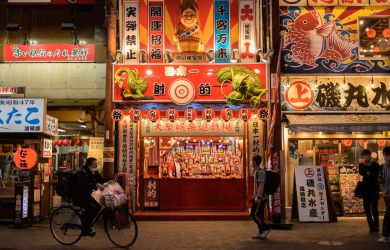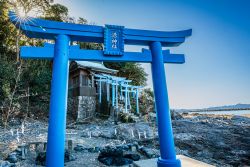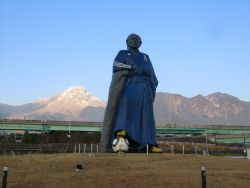
November 12, 2009
Building Blues
Tokyo’s existential doubt is its biggest strength—and weakness
By Metropolis
Originally published on metropolis.co.jp on November 2009
In a moment of morbid humor that’s been lost with each subsequent retelling, earth scientist and professional doom-monger Bill McGuire once described Tokyo as “the city waiting to die.” It was a melodramatic way of putting a point that’s well understood by most residents: this is a metropolis whose days are numbered.
“There are few cities in the world as well schooled in the concept of destruction as part of the cycle of rebirth,” writes Stephen Mansfield in the introduction to Tokyo: A Cultural and Literary History. “Earthquakes, volcanic eruptions, typhoons, epidemics, floods, the eerily beautiful fires known as the ‘flowers of Edo,’ the bombing of tightly compacted civilian areas in the war—these and many other calamities have been periodically visited upon it… Tokyo’s insecurities, its impermanence, the conviction that it could all be gone at any given moment, lend this city of dark premonitions and bright lights an intensity unlike any other capital in the modern world.”
Centuries tottering on the existential brink have bred a city with little truck for enduring gestures, where reminders of the past are chucked away with the same nonchalance you might show last week’s newspaper. Anybody who’s lived here for more than a few months will be familiar with the way that buildings can seem to appear and vanish almost overnight, or the near impossibility of walking more than a few hundred meters without coming across some sort of construction site. If the latest demolition is noted at all, it’s normally shrugged off with a “shoganai”—the closest Japanese analog to “shit happens,” though one deployed with far greater frequency.
And is that such a bad thing? Writes Mansfield: “In submitting itself to repeated sessions of radical urban surgery and implanting, allowing the scalpel to slice away and dispose of loose tissue, Tokyo’s remodeled surfaces always seem youthful, to have somehow escaped the rigor mortis of older capitals.” The implication here is that those who rail against the constant cycle of scrap-and-rebuild are missing the point. Tokyo is the endless process of change, the never-ending tweaks to the cityscape, the wanton disregard for its own aesthetic harmony and history. The people who survive its travails best are the ones who don’t form too many attachments or invest too much emotion in their physical surroundings. Enjoy it today; forget it when it’s gone tomorrow.

Illustration by Eparama Tuibenau
All the same, there are times when Tokyo seems to go too far. Passengers riding the Odakyu line recently might have noticed a poster featuring an artist’s impression of the proposed new Shimokitazawa station. The current building—a cramped, dirty maze of corridors and vertiginous staircases—is to be replaced by a shimmering glass atrium that’s futuristic in an Ikea kind of way. The PR blurb gushes about “a unique and multifaceted design that is appropriate to the lively cultural hotbed of Shimokitazawa,” though they might as well have said “we thought we were designing a shopping mall in Saitama.” It’s a blight, a monstrosity, an insult. It’s pure Tokyo.
The station is, of course, part of a far more comprehensive redevelopment that will see the Odakyu line diverted underground by 2013 and—as the pièce de resistance—a 26m-wide highway bulldozed through the center of the neighborhood. This will in turn negate zoning laws that have so far restricted the height of buildings in the area, effectively giving developers free rein to sling up high-rise apartments. There’s an illustration of how it will all look available on the Setagaya Ward website; it looks a bit like Ikebukuro.
The postmodernist in me wants to applaud these changes, or at least to laugh them off as another example of Tokyo being Tokyo. Instead, they leave me slightly nauseous. It’s a model of development that might work somewhere else—say, Marunouchi, which has been greatly improved by the glitzy towers that have gone up there. But Shimokitazawa isn’t Marunouchi: its charms are contingent on its winding streets and tightly-packed buildings. This latest round of civic improvement is more akin to a lobotomy, in that there’s no way the area can continue to be itself once the construction has happened.
But cheer up: the Big One might hit before they finish.







